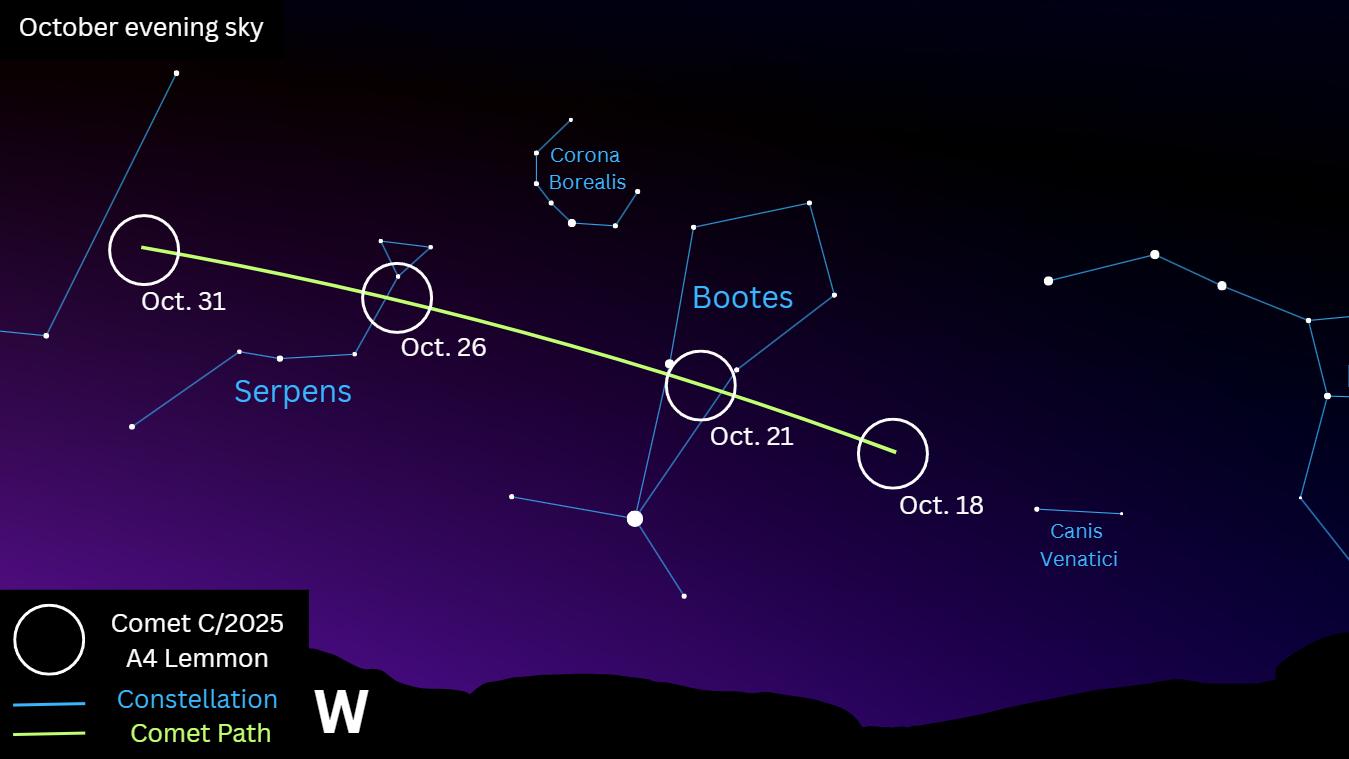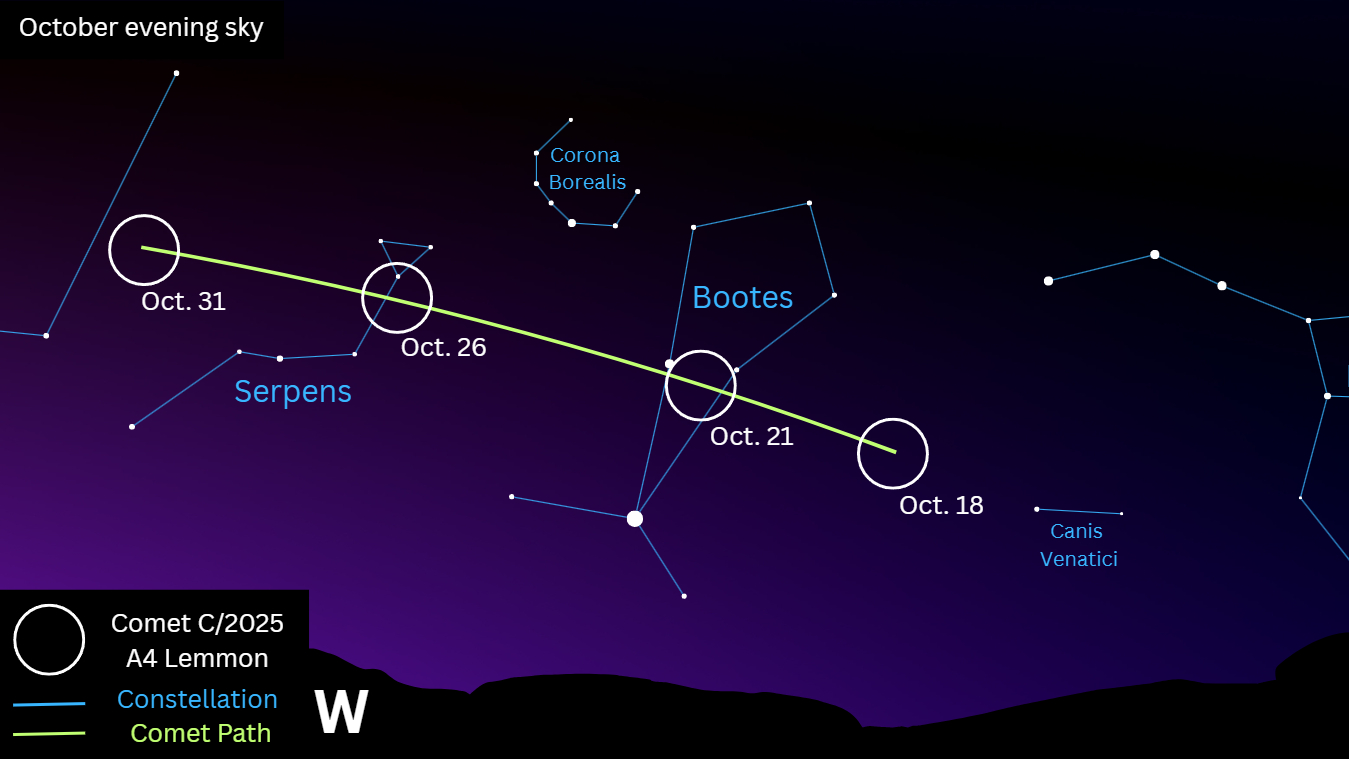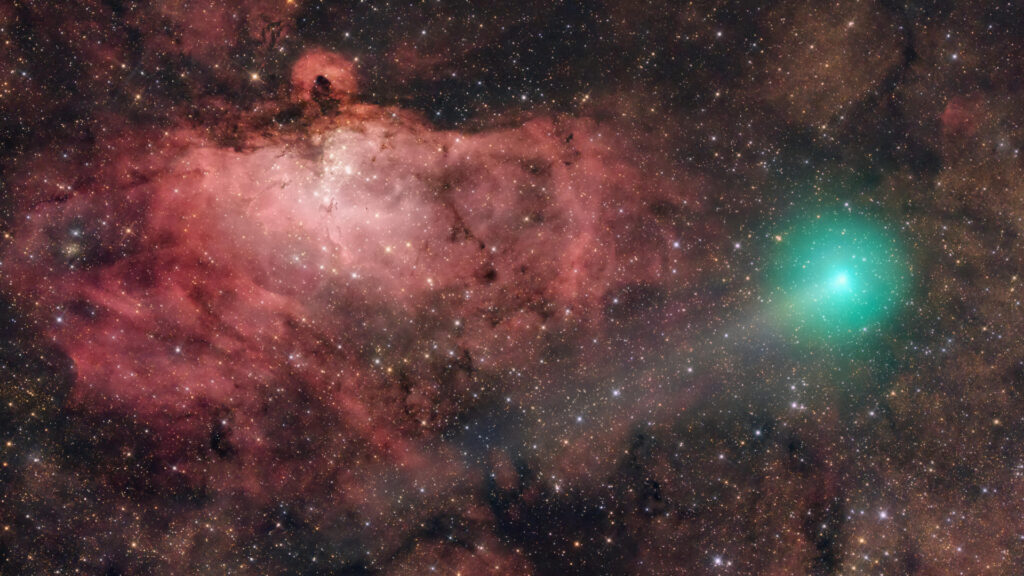Now Reading: See Comet Lemmon cross paths with a cosmic serpent tonight
-
01
See Comet Lemmon cross paths with a cosmic serpent tonight
See Comet Lemmon cross paths with a cosmic serpent tonight

Comet Lemmon will cut through the neck of a cosmic serpent on the night of Oct. 26, when it passes through the stars of the constellation Serpens Caput ahead of its close approach to the sun in early November.
Magnitude
Magnitude is the scale used to measure the apparent brightness of objects in the night sky. The lower the number, the brighter the object! For context, the brightest stars are around Mag +1, while a full moon is -13 and the sun is -27.
Comet Lemmon is currently estimated to have a magnitude of around +4.3 according to the Comet Observation Database (COBS) run by the Crni Vrh Observatory in Slovenia, which should make it visible to the unaided eye from dark sky locations.
Look to the western horizon from a dark sky location at sunset on Oct. 26 to find Comet Lemmon’s hazy light shine directly beneath the triangle formation of stars representing the head of the great snake in the constellation Serpens Caput. By the following night, the comet will have cut through the neck of the celestial serpent to approach the constellation Ophiuchus, the “snake bearer”.

Serpens is the only constellation that appears in two halves in the night sky, with Serpens Caput appearing to the right of the constellation Ophiuchus, with Serpens Cauda — the tail — appearing to the snake bearer’s left.
Whilst Comet Lemmon is technically bright enough to view with the naked eye from a dark location, a telescope or binoculars will help reveal the reflected light of the ancient visitor. Be sure to check out our guide to photographing and observing comets and to peruse our roundups of the best cameras and lenses for capturing the night sky if you’re looking to update your gear!
Editor’s Note: If you would like to share your commentary photos with Space.com’s readers, then please send your photo(s), comments, and your name and location to spacephotos@space.com.
Stay Informed With the Latest & Most Important News
Previous Post
Next Post
-
 012024 in Review: Highlights from NASA in Silicon Valley
012024 in Review: Highlights from NASA in Silicon Valley -
 02Panasonic Leica Summilux DG 15mm f/1.7 ASPH review
02Panasonic Leica Summilux DG 15mm f/1.7 ASPH review -
 03How New NASA, India Earth Satellite NISAR Will See Earth
03How New NASA, India Earth Satellite NISAR Will See Earth -
 04From Polymerization-Enabled Folding and Assembly to Chemical Evolution: Key Processes for Emergence of Functional Polymers in the Origin of Life
04From Polymerization-Enabled Folding and Assembly to Chemical Evolution: Key Processes for Emergence of Functional Polymers in the Origin of Life -
 05And Thus Begins A New Year For Life On Earth
05And Thus Begins A New Year For Life On Earth -
 06Astronomy Activation Ambassadors: A New Era
06Astronomy Activation Ambassadors: A New Era -
07SpaceX launch surge helps set new global launch record in 2024




















